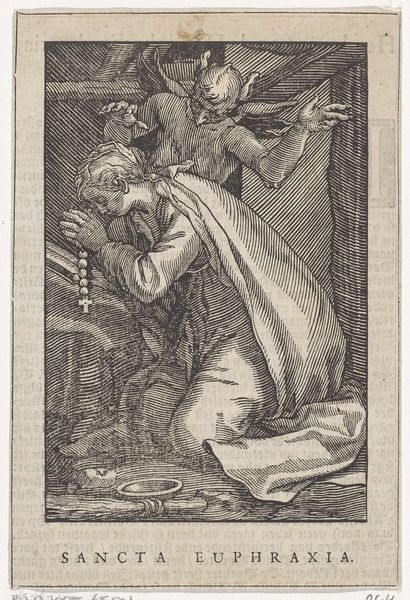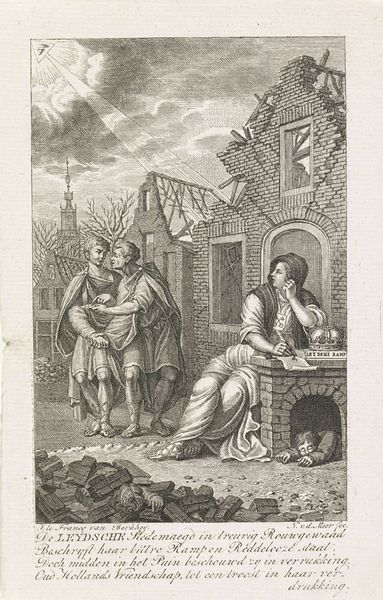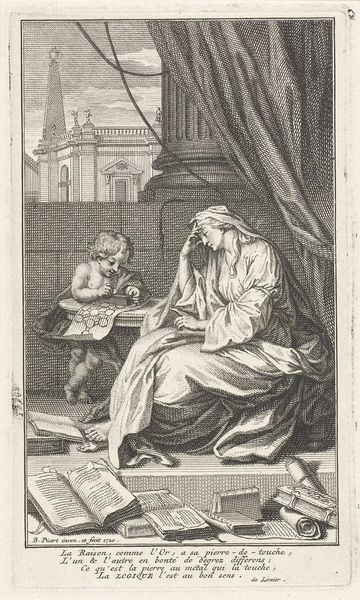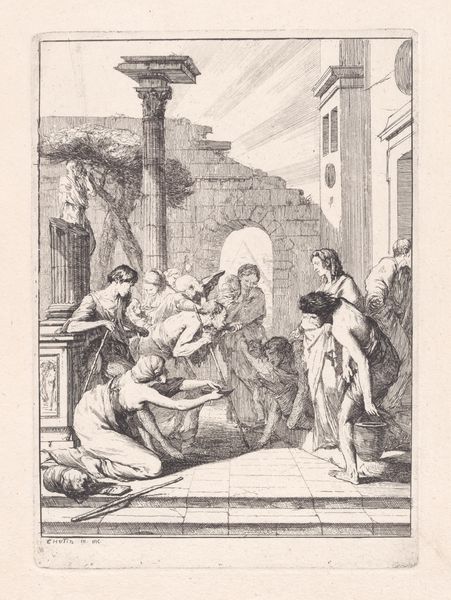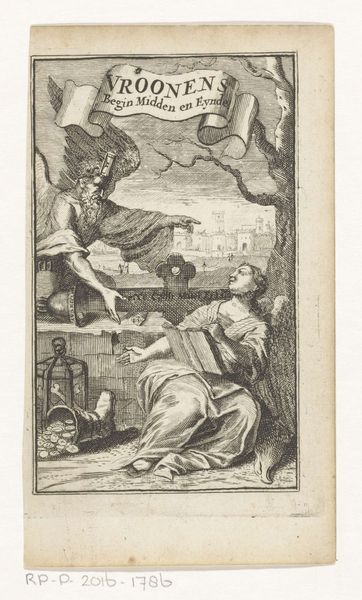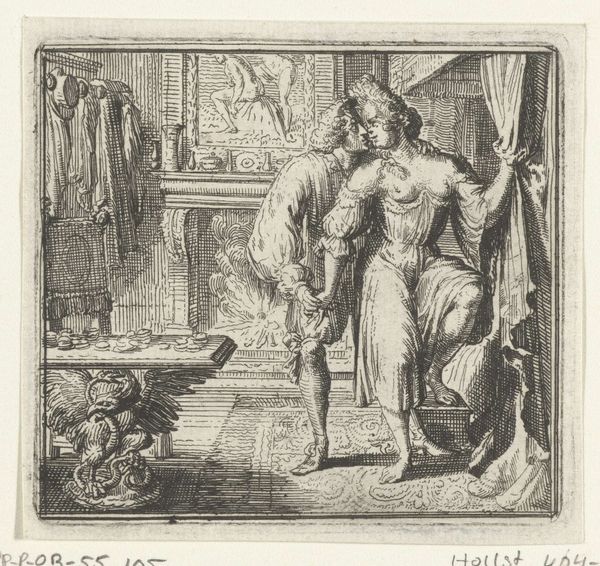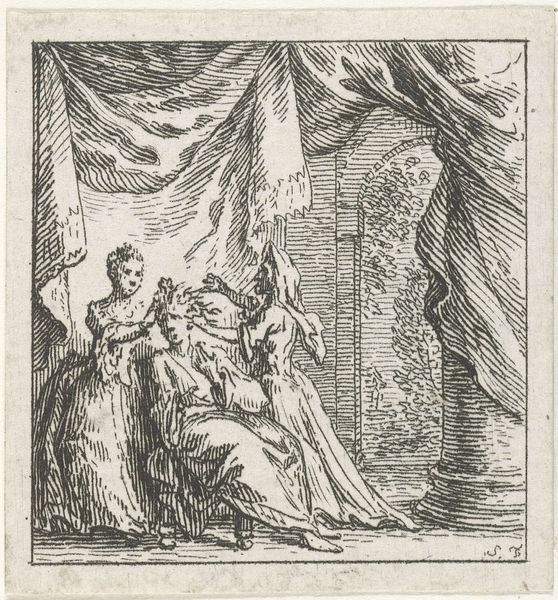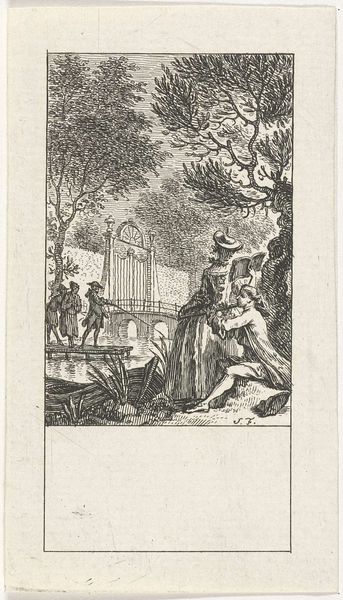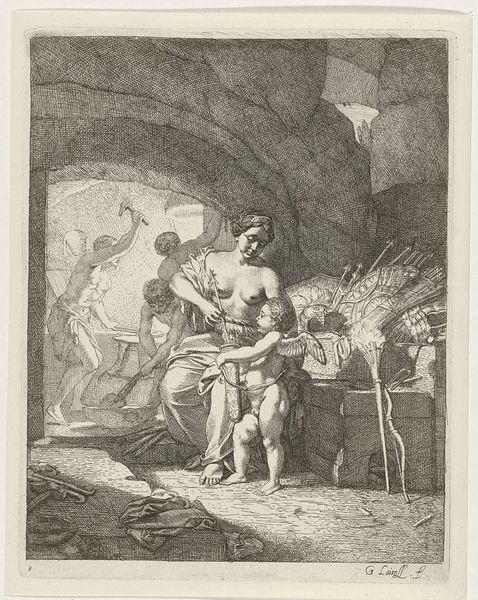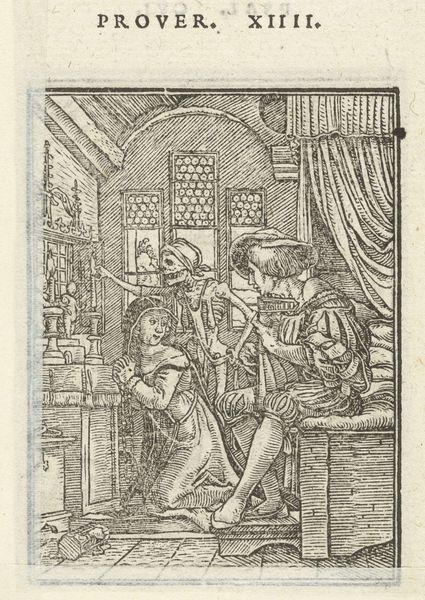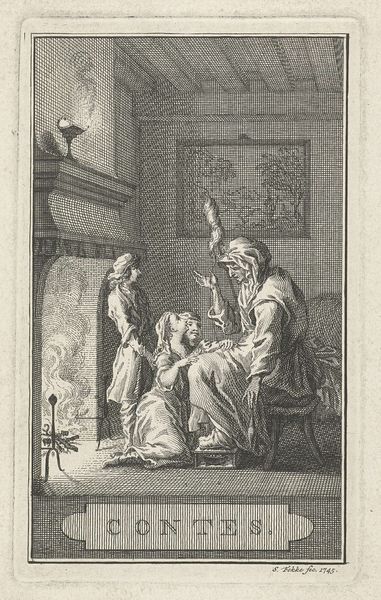
print, engraving
#
narrative-art
#
baroque
# print
#
figuration
#
genre-painting
#
history-painting
#
engraving
Dimensions: height 128 mm, width 77 mm
Copyright: Rijks Museum: Open Domain
Editor: This engraving, titled "Pero zoogt de geketende Cimon in de gevangenis" by Simon Fokke, dates back to the 18th century. It depicts a scene inside a prison. The mood is somber, heavy with confinement, and the architecture feels very oppressive. What can you tell me about this piece? How do you interpret it? Curator: It's a powerful image, isn't it? Beyond the immediate depiction, this scene, often referred to as "Roman Charity," resonates deeply with societal power dynamics and gender roles. Cimon, imprisoned and condemned to death, is being kept alive by his daughter, Pero, who is breastfeeding him. This act of subversion, a woman sustaining a man in defiance of the law, challenges patriarchal structures. Editor: I see. So, it’s not just a sentimental image of familial love, but something more transgressive? Curator: Precisely. Think about the context. The 18th century was an era of Enlightenment ideals, yet deeply entrenched in social hierarchies. This image throws that into sharp relief. Pero's actions can be viewed as a feminist act before the formal articulation of feminist theory. She is literally nourishing resistance against the established order. The act itself questions how we value bodies and the work that bodies – specifically female bodies – perform. Editor: So, in a time of such stark social inequalities, this print may have had revolutionary undertones? Curator: It certainly invites that reading. Consider the implications of a woman in this period reclaiming agency over her body and using it to undermine male authority. Furthermore, the print's dissemination allowed for the propagation of these subversive ideals. Did it trigger discussions around societal expectations for women? Absolutely! It opens a discourse on survival, sacrifice, and the silent power held within the most intimate of human actions. What do you think? Editor: I never considered all these social implications before! Looking at the figures and their poses makes me see how powerful her pose of defiance is in that setting. Curator: It certainly shows us art is never neutral. It always reflects the complex values and power struggles of its time and even beyond!
Comments
No comments
Be the first to comment and join the conversation on the ultimate creative platform.
